Understanding ALT Lab Ranges: A Comprehensive Guide to Liver Function Tests
What are the normal ALT levels in liver function tests. How do laboratories determine ALT upper reference limits. Why is standardization of ALT ranges important for diagnosing liver diseases. What factors influence ALT levels and interpretation of results.
The Importance of ALT in Liver Function Testing
Alanine aminotransferase (ALT) is a crucial enzyme measured in liver function tests to detect potential liver damage or disease. As an indicator of hepatocellular injury, ALT levels can provide valuable insights into liver health and function. However, the interpretation of ALT results relies heavily on the established reference ranges, which can vary significantly between laboratories.
What is ALT and why is it measured?
ALT is an enzyme primarily found in liver cells. When liver cells are damaged, ALT is released into the bloodstream, causing elevated levels in blood tests. Measuring ALT levels helps healthcare providers:

- Screen for liver diseases
- Monitor progression of known liver conditions
- Assess the effectiveness of treatments
- Detect potential drug-induced liver injury
Variability in ALT Upper Reference Limits
One of the key challenges in interpreting ALT results is the lack of standardization in upper reference limits (URLs) across different laboratories. This variability can lead to inconsistencies in patient care and clinical research.
Why do ALT reference ranges differ between laboratories?
Several factors contribute to the variation in ALT reference ranges:
- Differences in local reference populations
- Varying criteria for inclusion/exclusion in reference groups
- Diverse analytical methods and equipment
- Absence of validated universal standards for ALT
These differences can result in significantly different upper limits of normal (ULN) for ALT across laboratories, impacting clinical decision-making and research study criteria.
Establishing ALT Reference Ranges: Challenges and Considerations
The process of determining ALT reference ranges is complex and influenced by various factors. Understanding these challenges is crucial for healthcare providers and researchers interpreting ALT results.
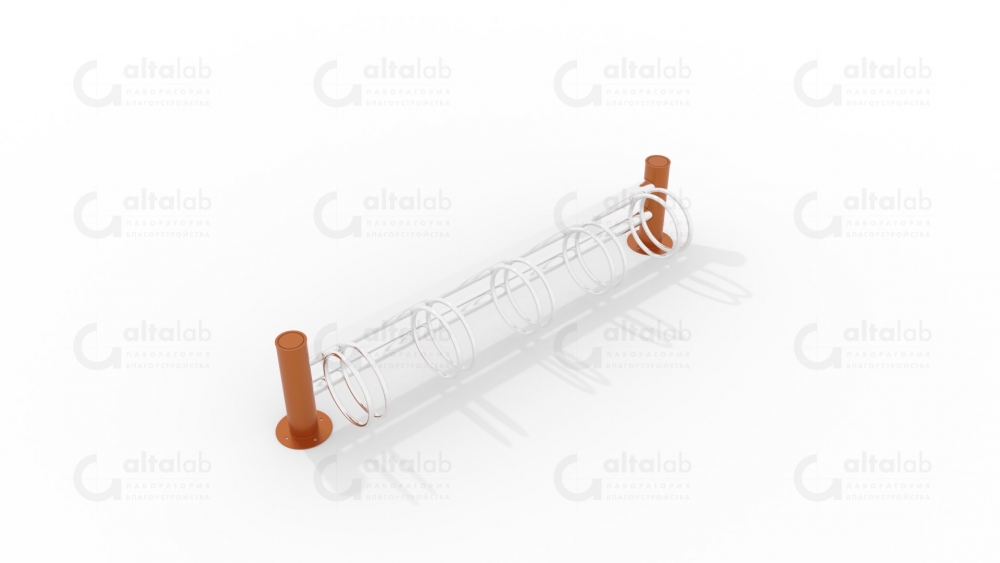
How do laboratories determine ALT reference ranges?
Laboratories typically establish ALT reference ranges through the following steps:
- Selecting a reference population
- Collecting blood samples from the chosen group
- Analyzing ALT levels using their specific methods and equipment
- Statistically determining the range that encompasses 95% of the results
This process, while standardized within each laboratory, can lead to significant variations between institutions due to differences in population demographics, analytical techniques, and statistical approaches.
The Impact of Population Health on ALT Reference Ranges
As the prevalence of obesity and related conditions like nonalcoholic fatty liver disease (NAFLD) increases in the general population, the composition of reference groups used to establish ALT ranges may be affected.
How does the obesity epidemic influence ALT reference ranges?
The rising prevalence of obesity and NAFLD can potentially skew ALT reference ranges upward. This occurs because:

- Reference populations may inadvertently include individuals with undiagnosed NAFLD
- Higher ALT levels associated with fatty liver become more common in the general population
- The definition of “normal” shifts to accommodate these higher levels
This shift can lead to underdiagnosis of liver conditions, as elevated ALT levels may be considered “normal” based on skewed reference ranges.
Towards Standardization: Efforts to Improve ALT Interpretation
Recognizing the need for more consistent ALT interpretation, researchers and medical organizations have proposed various approaches to standardize reference ranges.
What are some proposed solutions for ALT range standardization?
Several initiatives aim to improve the consistency and clinical utility of ALT reference ranges:
- Establishing lower, more sensitive ALT thresholds (e.g., 30 U/L for men, 19 U/L for women)
- Developing standardized criteria for selecting reference populations
- Creating international guidelines for ALT range determination
- Implementing age- and gender-specific reference ranges
These efforts seek to enhance the diagnostic accuracy of ALT testing and improve early detection of liver diseases.

Clinical Implications of ALT Range Variability
The lack of standardization in ALT reference ranges can have significant impacts on patient care, clinical research, and public health initiatives.
How does ALT range variability affect clinical practice?
Inconsistent ALT reference ranges can lead to several clinical challenges:
- Delayed diagnosis of liver conditions
- Unnecessary follow-up testing and procedures
- Inconsistent patient management across different healthcare settings
- Difficulties in comparing research results across studies
These issues highlight the importance of developing more standardized approaches to ALT interpretation.
ALT Levels and Liver Disease Risk
Recent research has shed light on the relationship between ALT levels and long-term liver health outcomes, even within ranges traditionally considered normal.
Can ALT levels within current normal ranges indicate increased liver disease risk?
Studies have shown that individuals with ALT levels in the upper end of the current normal range may still be at increased risk for liver-related complications:

- A Korean study found higher prevalence of NAFLD in individuals with ALT levels between 20-40 U/L compared to those below 20 U/L
- Increased liver-related mortality has been observed in middle-aged adults with ALT levels between 20-40 U/L
- These findings suggest that lower ALT thresholds may be more appropriate for identifying individuals at risk for liver disease
The Role of ALT in Clinical Research and Drug Development
ALT levels play a crucial role in clinical trials and drug development, particularly in assessing drug-induced liver injury and evaluating treatments for liver diseases.
How does ALT range variability impact clinical research?
The lack of standardized ALT reference ranges can affect clinical research in several ways:
- Inconsistent inclusion criteria for study participants
- Difficulties in comparing results across different research centers
- Challenges in establishing universal guidelines for drug safety monitoring
- Potential underestimation or overestimation of treatment effects
Addressing these issues is crucial for improving the quality and comparability of liver-related clinical research.

Future Directions in ALT Testing and Interpretation
As our understanding of liver physiology and pathology evolves, so too must our approach to ALT testing and interpretation. Several promising developments are on the horizon.
What advancements can we expect in ALT testing and interpretation?
Future improvements in ALT testing may include:
- Development of more sensitive and specific biomarkers for liver injury
- Integration of machine learning algorithms to interpret ALT results in context with other clinical data
- Personalized reference ranges based on individual patient characteristics
- Standardization of ALT testing methods and reporting across laboratories
These advancements could significantly enhance the clinical utility of ALT testing and improve early detection of liver diseases.
Practical Considerations for Healthcare Providers
Given the current variability in ALT reference ranges, healthcare providers must take a nuanced approach to interpreting ALT results.
How should clinicians approach ALT result interpretation?
To ensure optimal patient care, healthcare providers should:

- Be aware of their laboratory’s specific ALT reference range and how it was established
- Consider patient-specific factors such as age, gender, and body mass index when interpreting results
- Look for trends in ALT levels over time rather than relying on single measurements
- Consider lower ALT thresholds for further evaluation, especially in patients with risk factors for liver disease
- Integrate ALT results with other clinical and laboratory findings for a comprehensive assessment of liver health
By taking these factors into account, clinicians can make more informed decisions about patient care and the need for further liver evaluation.
The Economic Impact of ALT Range Variability
The lack of standardization in ALT reference ranges can have significant economic implications for healthcare systems and patients.
How does ALT range variability affect healthcare costs?
The economic impact of ALT range variability manifests in several ways:
- Increased healthcare expenditures due to unnecessary follow-up testing
- Potential cost savings from earlier detection and treatment of liver diseases
- Variability in insurance coverage and reimbursement based on different ALT thresholds
- Indirect costs associated with delayed diagnosis and progression of liver conditions
Balancing these factors is crucial for developing cost-effective approaches to liver disease screening and management.

Global Perspectives on ALT Testing and Interpretation
ALT testing practices and interpretation can vary significantly across different countries and healthcare systems, reflecting diverse approaches to liver disease management.
How do ALT testing practices differ internationally?
Global variations in ALT testing and interpretation include:
- Different reference ranges used in various countries
- Variations in the frequency of ALT testing as part of routine health screenings
- Diverse approaches to follow-up and further evaluation based on ALT results
- Varying integration of ALT testing with other liver function tests and imaging studies
Understanding these global differences is important for interpreting international research and developing universally applicable guidelines.
The Role of Professional Organizations in ALT Standardization
Professional medical organizations play a crucial role in shaping guidelines and standards for ALT testing and interpretation.
How are professional organizations addressing ALT range variability?
Various professional bodies are working towards improving ALT testing standardization:

- Developing consensus guidelines for ALT reference range determination
- Promoting research into optimal ALT thresholds for different populations
- Advocating for standardized reporting of ALT results across laboratories
- Educating healthcare providers on best practices for ALT result interpretation
These efforts aim to enhance the clinical utility of ALT testing and improve patient care across different healthcare settings.
Emerging Technologies in Liver Function Assessment
While ALT remains a cornerstone of liver function testing, new technologies are emerging that may complement or enhance traditional ALT measurements.
What new technologies are being developed for liver function assessment?
Innovative approaches to liver function evaluation include:
- Advanced imaging techniques for non-invasive assessment of liver fat and fibrosis
- Novel biomarkers that offer greater specificity for different types of liver injury
- Genetic testing to identify individuals at higher risk for liver diseases
- Artificial intelligence algorithms for integrating multiple data points to assess liver health
These emerging technologies may provide more comprehensive and personalized assessments of liver function in the future.
![]()
Patient Education and ALT Testing
Improving patient understanding of ALT testing and its implications is crucial for promoting liver health and encouraging appropriate follow-up.
How can healthcare providers effectively educate patients about ALT testing?
Strategies for enhancing patient education on ALT testing include:
- Providing clear explanations of what ALT measures and its significance
- Discussing the limitations of ALT testing and the importance of considering results in context
- Emphasizing the role of lifestyle factors in maintaining liver health
- Encouraging patients to track their ALT levels over time and discuss trends with their healthcare provider
Effective patient education can lead to better engagement in liver health management and improved outcomes.
In conclusion, while ALT testing remains a valuable tool for assessing liver health, the variability in reference ranges presents significant challenges for clinical practice and research. Ongoing efforts to standardize ALT testing and interpretation, coupled with emerging technologies and improved patient education, hold promise for enhancing the utility of this important liver function test. As our understanding of liver physiology and pathology continues to evolve, so too will our approaches to ALT testing and interpretation, ultimately leading to better liver health outcomes for patients worldwide.

The upper limits of normal for serum ALT levels reported by clinical laboratories depend on local reference populations
Arch Intern Med. Author manuscript; available in PMC 2013 Jun 3.
Published in final edited form as:
PMCID: PMC3670191
NIHMSID: NIHMS289204
, M.D.,1, M.D., Ph.D.,2 and , M.D.3, for the Nonalcoholic Steatohepatitis Clinical Research Network4
Brent A. Neuschwander-Tetri
1Saint Louis University Liver Center and Department of Internal Medicine, Saint Louis University School of Medicine, St. Louis, MO
Aynur Ünalp
2Johns Hopkins Center for Clinical Trials, Johns Hopkins University, Baltimore, MD
Michael H. Creer
3Department of Pathology and Laboratory Medicine, Saint Louis University School of Medicine, St. Louis, MO
1Saint Louis University Liver Center and Department of Internal Medicine, Saint Louis University School of Medicine, St. Louis, MO
Louis, MO
2Johns Hopkins Center for Clinical Trials, Johns Hopkins University, Baltimore, MD
3Department of Pathology and Laboratory Medicine, Saint Louis University School of Medicine, St. Louis, MO
Corresponding author: Brent A. Neuschwander-Tetri, M.D., Division of Gastroenterology and Hepatology, Saint Louis University School of Medicine, 3635 Vista Ave., St. Louis, MO 63110, Tel (314) 577-8764, Fax (314) 577-8125, ude.uls@abirtet
4A list of Steering Committee members of the Nonalcoholic Steatohepatitis Clinical Research Network is located at the end of this article.
The publisher’s final edited version of this article is available at Arch Intern MedSee other articles in PMC that cite the published article.
Chronic liver disease can progress to cirrhosis if not detected early and appropriate interventions taken when possible. Serum levels of alanine aminotransferase (ALT, SGPT) and aspartate aminotransferase (AST, SGOT) are commonly measured during routine health care to detect such unsuspected liver disease. Care providers often use the reporting laboratory’s ALT upper reference limit (upper limit of normal, ULN) or a multiple thereof (e.g., 1.5 × ULN) to trigger further evaluation. Such evaluation can be expensive and invasive, yet ignoring aminotransferase elevations can allow life-threatening liver disease to progress if not recognized and treated appropriately. Therefore, how clinical laboratories define their own ALT ULN values is critically important in determining the risk benefit ratio of further evaluation.
Care providers often use the reporting laboratory’s ALT upper reference limit (upper limit of normal, ULN) or a multiple thereof (e.g., 1.5 × ULN) to trigger further evaluation. Such evaluation can be expensive and invasive, yet ignoring aminotransferase elevations can allow life-threatening liver disease to progress if not recognized and treated appropriately. Therefore, how clinical laboratories define their own ALT ULN values is critically important in determining the risk benefit ratio of further evaluation.
For technical reasons related to sample stability, validated standards are not used to establish a ULN for ALT and AST1. Instead, laboratories use locally-defined reference populations to establish their own reference ranges for these tests. The criteria used to include and exclude individuals from this important cohort directly determine the value of the test in identifying the presence of disease2. As obesity increases in the general population, such reference populations could increasingly include individuals with unsuspected nonalcoholic fatty liver disease (NAFLD) which would skew the upper reference limit to inappropriately high levels. One recent population study excluded people at risk for NAFLD and concluded that the “healthy range” for serum ALT should be up to 30 U/L for men and 19 U/L for women3. Although some have argued that this would lead to unnecessary medical expenditures and further burden our healthcare system4, 5, large population studies in Korea have demonstrated increased prevalence of NAFLD6 and increased liver-related mortality in middle aged adults with ALT levels between 20 and 40 U/L compared to those with ALT < 20 U/L7.
One recent population study excluded people at risk for NAFLD and concluded that the “healthy range” for serum ALT should be up to 30 U/L for men and 19 U/L for women3. Although some have argued that this would lead to unnecessary medical expenditures and further burden our healthcare system4, 5, large population studies in Korea have demonstrated increased prevalence of NAFLD6 and increased liver-related mortality in middle aged adults with ALT levels between 20 and 40 U/L compared to those with ALT < 20 U/L7.
The Nonalcoholic Steatohepatitis (NASH) Clinical Research Network (CRN), a group of eight academic institutions assembled by and in collaboration with the National Institute of Diabetes and Digestive and Kidney Diseases (NIDDK) to study fatty liver disease, began to design clinical studies in 2002 and considered using an ALT value greater than the ULN as an entry criterion for its major pediatric treatment trial8. However, variability was found in the ALT ULN values reported by clinical laboratories at CRN clinical centers that could confound the inclusion of homogeneous patient cohorts in this and other studies. The study described here was undertaken to establish the causes of the variability reported by laboratories of their self-defined ULN using results of analyses of samples distributed to clinical laboratories as part of annual accreditation by the College of American Pathologists (CAP).
The study described here was undertaken to establish the causes of the variability reported by laboratories of their self-defined ULN using results of analyses of samples distributed to clinical laboratories as part of annual accreditation by the College of American Pathologists (CAP).
Methods
Eleven clinical laboratories were identified as the primary laboratories to be used by the CRN clinical centers. The directors of these laboratories were queried in March 2003 using a written questionnaire regarding their results for ALT determinations of five samples analyzed as part of their CAP accreditation in 2002, the standard deviations of their analysis of these samples, the make and model of the analyzer used, and how they defined their own laboratory’s ULN. CAP external proficiency samples for ALT activity measurement are shipped as liquid serum or plasma maintained at 4 degrees C in a thermally insulated container. Directors were asked whether people with the following criteria were excluded from the reference population in order to establish the ALT ULN: known medical conditions (e. g., hypertension, diabetes, heart disease, arthritis), current medication use, history of intravenous drug use, obesity (BMI > 30 kg/m2), overweight (BMI > 25 kg/m2), or other factors. Data were collated by the NASH CRN Data Coordinating Center.
g., hypertension, diabetes, heart disease, arthritis), current medication use, history of intravenous drug use, obesity (BMI > 30 kg/m2), overweight (BMI > 25 kg/m2), or other factors. Data were collated by the NASH CRN Data Coordinating Center.
Results
Responses to the surveys were provided by all 11 clinical laboratories queried. The upper reference ranges defined using local reference populations () varied from 35 U/L to 79 U/L for men and 31 U/L to 55 U/L for women (). Known disease states were typically used as exclusion criteria but overweight and obesity were not taken into account by any of the laboratories.
Reference ranges for serum ALT reported by the 11 NASH CRN laboratories. The bars indicate the reference ranges; the upper limit for women varied from 31 U/L in laboratory B to 55 U/L in laboratory E; the upper limit for men varied from 35 U/L in laboratory A to 79 U/L in laboratory K. The lower limit ranged from 0 to 12 U/L.
Table 1
Characteristics of the reference populations used to define the serum ALT ULN by 11 clinical laboratories.
| Lab | N | Characteristics |
|---|---|---|
| A | Unknown | Reference range was determined long ago; as new instruments have been added, results always correlate, we continue to use this range |
| B | 94 | Excluded people with known medical conditions (e.g., hypertension, diabetes, heart disease, arthritis) or current medication use |
| C | 100 | Selected blood donors with no clinical symptoms |
| D | Unknown | Normal values have been the same for 25 years using the same instrument manufacturer; comparison studies between upgrades haves remained the same |
| E | Unknown | Excluded people with known medical conditions (e. g., hypertension, diabetes, heart disease, arthritis), current medication use, history of IV drug use g., hypertension, diabetes, heart disease, arthritis), current medication use, history of IV drug use |
| F | 222 | None |
| G | 222 | None |
| H | Unknown | Unknown criteria |
| I | > 120 | Excluded people with known medical conditions (e.g., hypertension, diabetes, heart disease, arthritis), current medication use, history of IV drug use, and whose medical history would affect test results |
| J | 1029 | Excluded people with known medical conditions (e. g., hypertension, diabetes, heart disease, arthritis) g., hypertension, diabetes, heart disease, arthritis) |
| K | 1354 | Selected people with normal AST, alkaline phosphatase, bilirubin |
The College of American Pathologists distributed samples to laboratories for analysis and the results of sample C15, a sample with an ALT level near the upper reference range value reported by most laboratories, were compared to the national means from all laboratories that used the same analyzer. Intralaboratory variability in measuring sample C15 was small (, SD < 3 U/L). Interlaboratory variability was also small with laboratories reporting mean C15 results in close agreement with other laboratories using the same analyzer. The maximum variability in C15 analysis attributable to differences among analyzers used by CRN labs was 18 U/L. Whereas this difference based on the particular machine used is not trivial, it did not completely explain the wide variation in ULN values reported by these laboratories.![]() Most of the variation of the ULN reported by these 11 laboratories can only be explained by differences in their reference populations. The impact of the variable ULN on interpretation of the normalcy of the l1 laboratories’ C15 results is shown in .
Most of the variation of the ULN reported by these 11 laboratories can only be explained by differences in their reference populations. The impact of the variable ULN on interpretation of the normalcy of the l1 laboratories’ C15 results is shown in .
Mean ALT values for CAP sample C15. The gray bars indicate the laboratory specific means of replicate analyses and the thin line error bars indicate ± 1 SD in each direction; four laboratories (A, D, J, K) did not provide standard deviations of their results. The national machine specific mean ± 1 SD in each direction for the analyzer used in each laboratory is indicated by overlying the thick line error bars. The results from most laboratories were within 2 U/L of the national mean for their specific analyzer; laboratory A deviated the most from the national mean yet the difference was still only 4.9 U/L, indicating that laboratory performance was generally excellent.
The ALT activity of one standardized sample (C15) reported by 11 different laboratories is expressed as a multiple of the gender-specific ULN for those laboratories. The disparate ULN values reported by different laboratories causes the results of this one sample to be variably interpreted as 0.66 to 1.75 × ULN if it came from a man and 0.87 to 1.73 × ULN if it came from a woman. If this sample was from a woman, it would be reported as normal by 3 laboratories (E, F, G) and elevated by the other 8 (Figure 3). If it was from a man, it would be reported as normal in 7 laboratories and elevated in 4 (A, B, C, D)
The disparate ULN values reported by different laboratories causes the results of this one sample to be variably interpreted as 0.66 to 1.75 × ULN if it came from a man and 0.87 to 1.73 × ULN if it came from a woman. If this sample was from a woman, it would be reported as normal by 3 laboratories (E, F, G) and elevated by the other 8 (Figure 3). If it was from a man, it would be reported as normal in 7 laboratories and elevated in 4 (A, B, C, D)
Since differences among analyzers play a modest role in contributing to differences in ALT values reported by different laboratories, the CAP data were further analyzed to determine whether the differences among machines were proportional to the values obtained or if the difference among machines was relatively constant. A relatively constant difference becomes less significant at higher ALT levels whereas a proportional difference amplifies the variability among analyzers and becomes relevant for clinical or study criteria that use high levels such as 500 U/L as a cutoff to trigger an intervention or evaluation. Analysis of CAP samples with lower and higher ALT levels revealed that the analyzer-specific differences were relatively constant and not proportional to the ALT result. Thus the variability among analyzers becomes less significant when measuring samples with higher ALT levels.
Analysis of CAP samples with lower and higher ALT levels revealed that the analyzer-specific differences were relatively constant and not proportional to the ALT result. Thus the variability among analyzers becomes less significant when measuring samples with higher ALT levels.
Discussion
The analysis of CAP data for ALT from eleven clinical laboratories with respect to each laboratory’s reported reference range demonstrates that the primary factor contributing to the widely divergent ALT ULN values is not variability within a laboratory or variability caused by the use of different analyzers, but must be related to the characteristics of the cohorts used by individual laboratories to define their own reference ranges. This unsettling observation suggests that the reported ULN values provided by laboratories with their test reports may not be reliable in identifying patients with unsuspected chronic liver disease.
Especially germane to this issue is the common use of multiples of reported ULN values as criteria for clinical trial entry or initiating clinical interventions such as stopping medications or further evaluating the abnormality with blood tests, imaging and even a liver biopsy. Multiplying inaccurate ULN values only multiplies the errant value created by using the local reference population. For example, if therapy with an HMG-CoA reductase inhibitor (i.e, a statin) is to be discontinued if the ALT rises above 3 × ULN, then clinical management will vary considerably depending on where a patient obtains a blood test.
Multiplying inaccurate ULN values only multiplies the errant value created by using the local reference population. For example, if therapy with an HMG-CoA reductase inhibitor (i.e, a statin) is to be discontinued if the ALT rises above 3 × ULN, then clinical management will vary considerably depending on where a patient obtains a blood test.
The factors contributing to the variability in reference cohorts used to establish ULN values reported by different laboratories are unknown. Certainly, obesity could be a major factor. Obesity is commonly associated with NAFLD, an increasingly common condition that causes progressive liver disease to the point of cirrhosis in some patients. NAFLD can cause ALT elevations and as the current epidemic of obesity increases, reference populations may include increasing numbers of people with undiagnosed NAFLD. A recent study of adults enrolled in the Dallas Heart Study identified imaging evidence of NAFLD in 33% of the adult population9, suggesting a high likelihood that obesity and associated liver disease contribute to the relatively high ALT levels in laboratory reference populations. Alternatively, anthropomorphic, clinical or demographic differences other than obesity could be responsible for the variation among laboratories.
Alternatively, anthropomorphic, clinical or demographic differences other than obesity could be responsible for the variation among laboratories.
In summary, the ULN for serum ALT reported by clinical laboratories usually reflects characteristics of the local reference population, a population that was not screened for risk factors for fatty liver disease in our study. Differences among analyzers provided by different manufacturers play only a modest role in different ULN values from different laboratories whereas laboratory proficiency does not play a role. The implication of this finding for clinical practice is that the ULN for ALT reported by clinical laboratories that accompanies test results may not be reliable for identifying patients with unsuspected liver disease when the ULN is substantially above the proposed healthy range for ALT of 30 U/L for men and 19 U/L for women3. With the increasing prevalence of obesity and the likely parallel increase in the prevalence of NAFLD, clinical laboratories need to anticipate how this disease might adversely alter the makeup of reference populations. Laboratories should consider identifying healthy subjects without risk factors for insulin resistance and fatty liver disease when establishing reference groups for testing serum ALT. Until this is done, clinicians might identify patients with liver disease more consistently by using absolute values (such as 40 U/L) for the upper normal upper range of ALT rather than relying on laboratory-specified reference ranges.
Laboratories should consider identifying healthy subjects without risk factors for insulin resistance and fatty liver disease when establishing reference groups for testing serum ALT. Until this is done, clinicians might identify patients with liver disease more consistently by using absolute values (such as 40 U/L) for the upper normal upper range of ALT rather than relying on laboratory-specified reference ranges.
Acknowledgments
The Nonalcoholic Steatohepatitis Clinical Research Network is supported by the National Institute of Diabetes and Digestive and Kidney Diseases (grants U01DK061718, U01DK061728, U01DK061731, U01DK061732, U01DK061734, U01DK061737, U01DK061738, U01DK061730, and U01DK061713 and the National Institute of Child Health and Human Development.
Members of the Steering Committee of the Nonalcoholic Steatohepatitis Clinical Research Network
Cleveland Clinic, Cleveland, OH: Arthur J. McCullough, MD Duke University Medical Center, Durham, NC: Anna Mae Diehl, MD Indiana University School of Medicine, Indianapolis, IN: Naga Chalasani, MD Johns Hopkins University Center for Clinical Trials (Data Coordinating Center), Baltimore, MD: James Tonascia, PhD National Institute of Diabetes and Digestive and Kidney Diseases (NIDDK), Bethesda, MD: Patricia R. Robuck, PhD, MPH Saint Louis University, St Louis, MO: Brent A. Neuschwander-Tetri, MD University of California San Diego, San Diego, CA: Joel E. Lavine, MD, PhD University of California San Francisco, San Francisco, CA: Nathan M. Bass, MD, PhD University of Washington, Seattle, WA: Kris V. Kowdley, MD Virginia Commonwealth University, Richmond, VA: Arun J. Sanyal, MD
Robuck, PhD, MPH Saint Louis University, St Louis, MO: Brent A. Neuschwander-Tetri, MD University of California San Diego, San Diego, CA: Joel E. Lavine, MD, PhD University of California San Francisco, San Francisco, CA: Nathan M. Bass, MD, PhD University of Washington, Seattle, WA: Kris V. Kowdley, MD Virginia Commonwealth University, Richmond, VA: Arun J. Sanyal, MD
I, Brent A. Neuschwander-Tetri, had full access to all of the data in the study and take responsibility for the integrity of the data and the accuracy of the data analysis.
Footnotes
The authors report no financial conflicts of interest.
References
1. Canalias F, Camprubi S, Sanchez M, Gella FJ. Metrological traceability of values for catalytic concentration of enzymes assigned to a calibration material. Clin Chem Lab Med. 2006;44:333–339. [PubMed] [Google Scholar]2. PetitClerc C, Wilding P. The theory of reference values. Part 2. Selection of individuals for the production of reference values. J Clin Chem Clin Biochem. 1984;22:203–208. [PubMed] [Google Scholar]3. Prati D, Taioli E, Zanella A, et al. Updated definitions of healthy ranges for serum alanine aminotransferase levels. Ann Intern Med. 2002;137:1–9. [PubMed] [Google Scholar]4. Kaplan MM. Alanine aminotransferase levels: what’s normal? Ann Intern Med. 2002;137:49–51. [PubMed] [Google Scholar]5. Kunde SS, Lazenby AJ, Clements RH, Abrams GA. Spectrum of NAFLD and diagnostic implications of the proposed new normal range for serum ALT in obese women. Hepatology. 2005;42:650–656. [PubMed] [Google Scholar]6. Chang Y, Ryu S, Sung E, Jang Y. Higher concentrations of alanine aminotransferase within the reference interval predict nonalcoholic fatty liver disease. Clin Chem. 2007;53:686–692. [PubMed] [Google Scholar]7. Kim HC, Nam CM, Jee SH, Han KH, Oh DK, Suh I. Normal serum aminotransferase concentration and risk of mortality from liver diseases: prospective cohort study. BMJ. 2004;328:983. [PMC free article] [PubMed] [Google Scholar]8.
J Clin Chem Clin Biochem. 1984;22:203–208. [PubMed] [Google Scholar]3. Prati D, Taioli E, Zanella A, et al. Updated definitions of healthy ranges for serum alanine aminotransferase levels. Ann Intern Med. 2002;137:1–9. [PubMed] [Google Scholar]4. Kaplan MM. Alanine aminotransferase levels: what’s normal? Ann Intern Med. 2002;137:49–51. [PubMed] [Google Scholar]5. Kunde SS, Lazenby AJ, Clements RH, Abrams GA. Spectrum of NAFLD and diagnostic implications of the proposed new normal range for serum ALT in obese women. Hepatology. 2005;42:650–656. [PubMed] [Google Scholar]6. Chang Y, Ryu S, Sung E, Jang Y. Higher concentrations of alanine aminotransferase within the reference interval predict nonalcoholic fatty liver disease. Clin Chem. 2007;53:686–692. [PubMed] [Google Scholar]7. Kim HC, Nam CM, Jee SH, Han KH, Oh DK, Suh I. Normal serum aminotransferase concentration and risk of mortality from liver diseases: prospective cohort study. BMJ. 2004;328:983. [PMC free article] [PubMed] [Google Scholar]8. Lavine JE, Schwimmer JB. Clinical Research Network launches TONIC trial for treatment of nonalcoholic fatty liver disease in children. J Pediatr Gastroenterol Nutr. 2006;42:129–130. [PubMed] [Google Scholar]
Lavine JE, Schwimmer JB. Clinical Research Network launches TONIC trial for treatment of nonalcoholic fatty liver disease in children. J Pediatr Gastroenterol Nutr. 2006;42:129–130. [PubMed] [Google Scholar]
Mildly Elevated Liver Transaminase Levels: Causes and Evaluation
1. Radcke S,
Dillon JF,
Murray AL.
A systematic review of the prevalence of mildly abnormal liver function tests and associated health outcomes. Eur J Gastroenterol Hepatol.
2015;27(1):1–7….
2. Ioannou GN,
Boyko EJ,
Lee SP.
The prevalence and predictors of elevated serum aminotransferase activity in the United States in 1999–2002. Am J Gastroenterol.
2006;101(1):76–82.
3. Younossi ZM,
Stepanova M,
Afendy M,
et al.
Changes in the prevalence of the most common causes of chronic liver diseases in the United States from 1988 to 2008. Clin Gastroenterol Hepatol.
2011;9(6):524–530e1.
4. Morisco F,
Pagliaro L,
Caporaso N,
et al.;
University of Naples Federico II, Italy.
Consensus recommendations for managing asymptomatic persistent non-virus non-alcohol related elevation of aminotransferase levels: suggestions for diagnostic procedures and monitoring. Dig Liver Dis.
2008;40(7):585–598.
5. Cobbold JF,
Anstee QM,
Thomas HC.
Investigating mildly abnormal serum aminotransferase values. BMJ.
2010;341:c4039.
6. Kwo PY,
Cohen SM,
Lim JK.
ACG clinical guideline: evaluation of abnormal liver chemistries. Am J Gastroenterol.
2017;112(1):18–35.
7. Pettersson J,
Hindorf U,
Persson P,
et al.
Muscular exercise can cause highly pathological liver function tests in healthy men. Br J Clin Pharmacol.
2008;65(2):253–259.
8. Sorbi D,
Boynton J,
Lindor KD.
The ratio of aspartate aminotransferase to alanine aminotransferase: potential value in differentiating nonalcoholic steatohepatitis from alcoholic liver disease. Am J Gastroenterol.
1999;94(4):1018–1022.
9. Oh RC,
Hustead TR.
Causes and evaluation of mildly elevated liver transaminase levels. Am Fam Physician.
2011;84(9):1003–1008.
10. Chalasani N,
Younossi Z,
Lavine JE,
et al.
The diagnosis and management of non-alcoholic fatty liver disease: practice guideline by the American Gastroenterological Association, American Association for the Study of Liver Diseases, and American College of Gastroenterology [published correction appears in Gastroenterology. 2012;143(2):503]. Gastroenterology.
2012;142(7):1592–1609.
11. European Association for the Study of the Liver;
European Association for the Study of Diabetes;
European Association for the Study of Obesity.
EASL-EASD-EASO clinical practice guidelines for the management of non-alcoholic fatty liver disease. J Hepatol.
2016;64(6):1388–1402.
12. Kistler KD,
Brunt EM,
Clark JM,
Diehl AM,
Sallis JF,
Schwimmer JB;
NASH CRN Research Group.
Physical activity recommendations, exercise intensity, and histological severity of nonalcoholic fatty liver disease. Am J Gastroenterol.
2011;106(3):460–468.
13. Zelber-Sagi S,
Godos J,
Salomone F.
Lifestyle changes for the treatment of nonalcoholic fatty liver disease: a review of observational studies and intervention trials. Therap Adv Gastroenterol.
2016;9(3):392–407.
14. Vos MB,
Lavine JE.
Dietary fructose in nonalcoholic fatty liver disease. Hepatology.
2013;57(6):2525–2531.
15. Sayiner M,
Koenig A,
Henry L,
Younossi ZM.
Epidemiology of nonalcoholic fatty liver disease and nonalcoholic steatohepatitis in the United States and the rest of the world. Clin Liver Dis.
Clin Liver Dis.
2016;20(2):205–214.
16. U.S. Department of Health and Human Services, U.S. Department of Agriculture. 2015–2020 dietary guidelines for Americans. 8th ed. December 2015. http://health.gov/dietaryguidelines/2015/guidelines. Accessed April 8, 2017.
17. Bohte AE,
van Werven JR,
Bipat S,
Stoker J.
The diagnostic accuracy of US, CT, MRI and 1H-MRS for the evaluation of hepatic steatosis compared with liver biopsy: a meta-analysis. Eur Radiol.
2011;21(1):87–97.
18. Angulo P,
Kleiner DE,
Dam-Larsen S,
et al.
Liver fibrosis, but no other histologic features, is associated with long-term outcomes of patients with nonalcoholic fatty liver disease. Gastroenterology.
2015;149(2):389–397.
19. Angulo P,
Bugianesi E,
Bjornsson ES,
et al.
Simple noninvasive systems predict long-term outcomes of patients with nonalcoholic fatty liver disease. Gastroenterology.
Gastroenterology.
2013;145(4):782–789.e4.
20. Castéra L,
Foucher J,
Bernard PH,
et al.
Pitfalls of liver stiffness measurement: a 5-year prospective study of 13,369 examinations. Hepatology.
2010;51(3):828–835.
21. Louvet A,
Mathurin P.
Alcoholic liver disease: mechanisms of injury and targeted treatment. Nat Rev Gastroenterol Hepatol.
2015;12(4):231–242.
22. Toshikuni N,
Tsutsumi M,
Arisawa T.
Clinical differences between alcoholic liver disease and nonalcoholic fatty liver disease. World J Gastroenterol.
2014;20(26):8393–8406.
23. Dunn W,
Angulo P,
Sanderson S,
et al.
Utility of a new model to diagnose an alcohol basis for steatohepatitis. Gastroenterology.
2006;131(4):1057–1063.
24. Cerović I,
Mladenović D,
Ješić R,
et al.
Alcoholic liver disease/nonalcoholic fatty liver disease index: distinguishing alcoholic from nonalcoholic fatty liver disease. Eur J Gastroenterol Hepatol.
2013;25(8):899–904.
25. Leise MD,
Poterucha JJ,
Talwalkar JA.
Drug-induced liver injury. Mayo Clin Proc.
2014;89(1):95–106.
26. Watkins PB,
Kaplowitz N,
Slattery JT,
et al.
Aminotransferase elevations in healthy adults receiving 4 grams of acetaminophen daily: a randomized controlled trial. JAMA.
2006;296(1):87–93.
27. Heard KJ,
Green JL,
Dart RC.
Serum alanine aminotransferase elevation during 10 days of acetaminophen use in nondrinkers. Pharmacotherapy.
2010;30(8):818–822.
28. Navarro VJ,
Senior JR.
Drug-related hepatotoxicity. N Engl J Med.
2006;354(7):731–739.
29. U.S. Food and Drug Administration. FDA drug safety communication: important safety label changes to cholesterol-lowering statin drugs. February 28, 2012. https://www.fda.gov/drugs/drugsafety/ucm293101.htm. Accessed March 24, 2017.
February 28, 2012. https://www.fda.gov/drugs/drugsafety/ucm293101.htm. Accessed March 24, 2017.
30. Centers for Disease Control and Prevention. Surveillance for viral hepatitis—United States, 2014. Updated June 22, 2016. https://www.cdc.gov/hepatitis/statistics/2014surveillance/commentary.htm#summary. Accessed August 6, 2016.
31. U.S. Preventive Services Task Force. Hepatitis C: screening. June 2013. http://www.uspreventiveservicestaskforce.org/Page/Document/UpdateSummaryFinal/hepatitis-c-screening. Accessed April 8, 2017.
32. U.S. Preventive Services Task Force. Hepatitis B virus infection: screening, 2014. May 2014. http://www.uspreventiveservicestaskforce.org/Page/Document/UpdateSummaryFinal/hepatitis-b-virus-infection-screening-2014. Accessed April 8, 2017.
33. Bacon BR,
Adams PC,
Kowdley KV,
Powell LW,
Tavill AS.
Diagnosis and management of hemochromatosis: 2011 practice guideline by the American Association for the Study of Liver Diseases. Hepatology.
Hepatology.
2011;54(1):328–343.
34. Crownover BK,
Covey CJ.
Hereditary hemochromatosis. Am Fam Physician.
2013;87(3):183–190.
35. Edwards CQ,
Kushner JP.
Screening for hemochromatosis. N Engl J Med.
1993;328(22):1616–1620.
36. Silverman EK,
Sandhaus RA.
Clinical practice. Alpha1-antitrypsin deficiency. N Engl J Med.
2009;360(26):2749–2757.
37. Bals R.
Alpha-1-antitrypsin deficiency. Best Pract Res Clin Gastroenterol.
2010;24(5):629–633.
38. Teckman JH,
Jain A.
Advances in alpha-1-antitrypsin deficiency liver disease. Curr Gastroenterol Rep.
2014;16(1):367.
39. Manns MP,
Czaja AJ,
Gorham JD,
et al.;
American Association for the Study of Liver Diseases.
Diagnosis and management of autoimmune hepatitis. Hepatology.
2010;51(6):2193–2213.
40. Krawitt EL.
Autoimmune hepatitis. N Engl J Med.
2006;354(1):54–66.
41. Pratt DS,
Kaplan MM.
Evaluation of abnormal liver-enzyme results in asymptomatic patients. N Engl J Med.
2000;342(17):1266–1271.
42. European Association for the Study of the Liver.
EASL clinical practice guidelines: Wilson’s disease. J Hepatol.
2012;56(3):671–685.
43. Lilford RJ,
Bentham L,
Girling A,
et al.
Birmingham and Lambeth Liver Evaluation Testing Strategies (BALLETS): a prospective cohort study. Health Technol Assess.
2013;17(28):i–xiv, 1–307.
44. Giboney PT.
Mildly elevated liver transaminase levels in the asymptomatic patient [published correction appears in Am Fam Physician. 2005; 72(1):41]. Am Fam Physician.
2005;71(6):1105–1110.
45. Johnston DE.
Special considerations in interpreting liver function tests. Am Fam Physician.
Am Fam Physician.
1999;59(8):2223–2230.
SGPT Test / ALT Test – About, Preparation, Lab Test Results & More
clinical definition of sgpt / alt (alanine transaminase)
Alanine transaminase (ALT) is an enzyme found in the highest amounts in the liver and kidney however much smaller amounts of it are also found in the heart and muscles. Injury to the liver results in the release of the substance into the blood. ALT is measured to see if the liver is damaged or diseased. In healthy individuals, ALT levels in the blood are low. When the liver is damaged, ALT is released into the bloodstream, which results in high ALT levels.
why do i need this test?
The alanine aminotransferase diagnoses liver disease, especially cirrhosis and hepatitis caused by alcohol, drugs, or viruses detects liver damage and analyses why jaundice was caused by a blood disorder or liver disease.
It monitors the effects of cholesterol-lowering medicines and various other medicines that can damage the liver.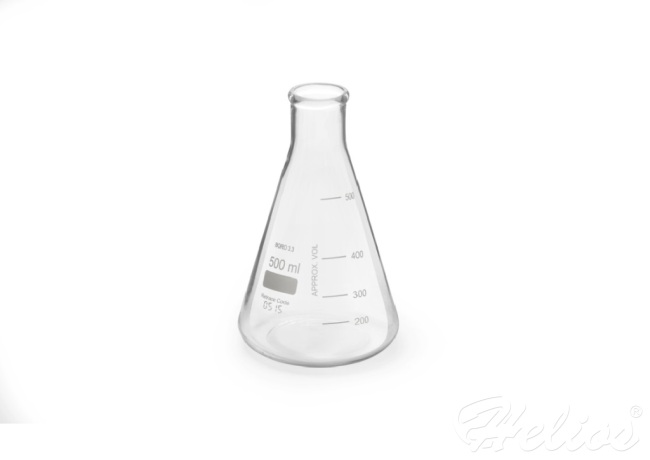
ALT can be ordered as a single test or as part of a requirement with other tests, for individuals who are at an increased risk for liver disease. Some examples include:
Individuals with a history of known or possible exposure to hepatitis viruses
People who are heavy drinkersIndividuals with a family history of liver diseaseIndividuals who consume drugs that might occasionally damage the liverPeople who are overweight and/or have diabetes
reason to take sgpt / alt (alanine transaminase) test
Common symptoms of high SGPT observed are:
• Loss of appetite
• Nausea, vomiting
• Jaundice
• Dark urine, light-coloured stool
• Itching (pruritus)
• Weakness
• Fatigue
what other tests might i have along with this test?
• Amylase (AMY)- serum: Amylase and lipase tests are used to detect pancreatitis. The tests measure the amount of these enzymes circulating in your bloodstream.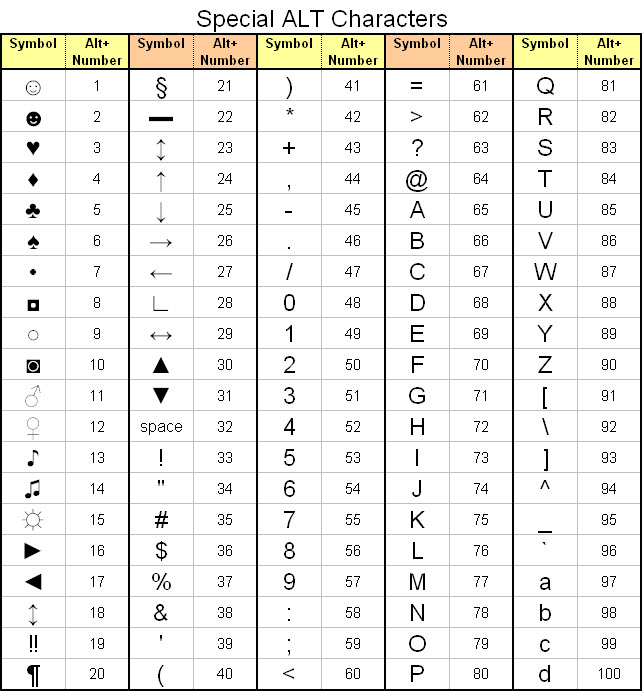
• Anti Microsomal Antibody (AMA): An antithyroid microsomal antibody test is also called a thyroid peroxidase test. It measures antithyroid microsomal antibodies in your blood.
• SGOT / AST (Aspartate Aminotransferase): The AST test measures the amount of AST in your blood. The test is also known as a serum glutamic-oxaloacetic transaminase test.
sgpt test price
These tests are not very expensive. The SGPT test cost ranges tentatively from Rs.75 to Rs.200
how do i prepare for the sgpt test/ alt test?
Preparatory instructions before the test :
• No Fasting Required.
• No other special preparations required.
An ALT test doesn’t require any special preparation. However, you should tell your doctor about any prescription or over-the-counter medications you’re taking. Some drugs may affect the levels of ALT in your blood. Your doctor might tell you to avoid taking certain medications for a period of time before the test.
what can affect my test results?
Hepatitis, infection, cirrhosis, liver cancer, or other liver diseases can often affect the ALT test results. Some medicines also affect it sometimes. Consult your doctor to know more about this.
what are the risks it might pose?
An ALT is a simple blood test with few risks. Bruising can sometimes occur in the area where the needle was inserted. The risk of bruising can be minimised by applying pressure to the injection site for several minutes after the needle is removed.
In very rare cases, the following complications can occur during or after an ALT test:
• excessive bleeding where the needle was inserted
• an accumulation of blood beneath your skin, which is called a hematoma
• lightheadedness or fainting at the sight of blood
• an infection at the puncture site
how do you understand this result?
Reference Range
“Diseases/conditions related to the Alanine transaminase (SGPT) test Hepatitis Cirrhosis Ischemia Tumor of liver Ischemia Viral hepatitis Infectious Mononucleosis, or myopathy. Congestive Heart Failure Liver damage Bile Duct problem”
Congestive Heart Failure Liver damage Bile Duct problem”
Interpretation-Female
what do my test results mean?
Normal results
The SGPT test report will determine the level of SGPT in your blood. The ALT normal range in blood is between 7 and 55 units per litre, but this value can vary depending on the hospital. This range can be affected by certain factors, including gender and age. It’s important to discuss your specific results with your doctor.
Abnormal results
Higher-than-normal levels of ALT can indicate liver damage. Increased levels of ALT may be a result of:
• hepatitis, which is an inflammatory condition of the liver
• cirrhosis, which is severe scarring of the liver
• death of liver tissue
• a tumour or cancer in the liver
• a lack of blood flow to the liver
• hemochromatosis, which is a disorder that causes iron to build up in the body
• mononucleosis, which is an infection usually caused by the Epstein-Barr virus
• pancreatitis, which is an inflammation of the pancreas
Most lower-level ALT results indicate a healthy liver. However, studies have shown that lower-than-normal results have been related to increased long-term mortality. Discuss your numbers specifically with your doctor if you’re concerned about a low reading.
However, studies have shown that lower-than-normal results have been related to increased long-term mortality. Discuss your numbers specifically with your doctor if you’re concerned about a low reading.
Understanding results ofSGPT / ALT (Alanine transaminase)
| “Diseases/conditions related to the Alanine transaminase (SGPT) test Hepatitis Cirrohosis Ischemia Tumor of liver Ischemia Viral hepatitis Infectious Mononucleosis, or myopathy. Congestive Heart Failure Liver damage Bile Duct problem” | Female |
‘*A Reference range is a set of values which helps the healthcare professional to interpret a medical test. It may vary with age, gender, and other factors. Reference ranges may also vary between labs, in value & units depending on instruments used and method of establishment of reference ranges’.
Aspartate Aminotransferase Exeter Clinical Laboratory International
Specimen
Serum
Units
u/L
Reference Range
M 18- 37
F 7-31
Test Usage
Aspartate aminotransferase (AST) is an enzyme involved in the transfer of an amino group from aspartate to alpha ketoglutarate to produce oxaloacetic acid and glutamate. AST is present in most organs. The highest concentrations, listed in descending order, are found in liver, heart, skeletal muscle, kidney, brain, pancreas, lung, leukocytes, and erythrocytes. Because of its wide tissue distribution, elevated AST levels have low specificity for any single disease. AST activities in liver are 7000 times higher than serum activities. Historically, AST has been used clinically to diagnose hepatitis, myocardial infarction, and skeletal muscle disease. AST increase in the absence of ALT increase indicates cardiac or skeletal muscle disease. ALT is a better indicator of liver disease, because of its more limited tissue distribution.
AST is present in most organs. The highest concentrations, listed in descending order, are found in liver, heart, skeletal muscle, kidney, brain, pancreas, lung, leukocytes, and erythrocytes. Because of its wide tissue distribution, elevated AST levels have low specificity for any single disease. AST activities in liver are 7000 times higher than serum activities. Historically, AST has been used clinically to diagnose hepatitis, myocardial infarction, and skeletal muscle disease. AST increase in the absence of ALT increase indicates cardiac or skeletal muscle disease. ALT is a better indicator of liver disease, because of its more limited tissue distribution.
AST tends to run slightly higher in males than females due to differences in body mass and varies with age. AST is slightly higher than ALT until the age of 15 to 20 years. Thereafter, AST activity tends to be lower than ALT. At age 60, AST and ALT activities become roughly equal. AST levels are about 15% higher in Africans than Caucasian men. Obese men may have mildly elevated AST levels. AST levels can fluctuate between 5 and 10% from one day to the next in the same individual. Moderate exercise increases AST levels for as long as 24 hours, usually less than 3 times the upper limit of normal. The half-life of AST in the circulation is 17 +/- 5 hours.
Obese men may have mildly elevated AST levels. AST levels can fluctuate between 5 and 10% from one day to the next in the same individual. Moderate exercise increases AST levels for as long as 24 hours, usually less than 3 times the upper limit of normal. The half-life of AST in the circulation is 17 +/- 5 hours.
The ratio of AST to ALT is sometimes useful to diagnose specific liver diseases. AST is distributed both in cytoplasm and mitochrondria of hepatocytes, while ALT is distributed mainly in the cytoplasm. Normal serum levels of AST are derived from the cytoplasmic fraction. Mild cell injury results in release of cytoplasmic enzyme, while severe injury releases both cytoplasmic and mitochondrial AST. In most types of liver disease, AST activity is lower than ALT; exceptions include alcoholic hepatitis and Reye syndrome. In alcoholic hepatitis, damage is primarily to the mitochondria and more AST is released than ALT. Also, alcoholic liver disease causes pyridoxine deficiency, which depresses ALT activity, because pyridoxine is an important enzyme cofactor.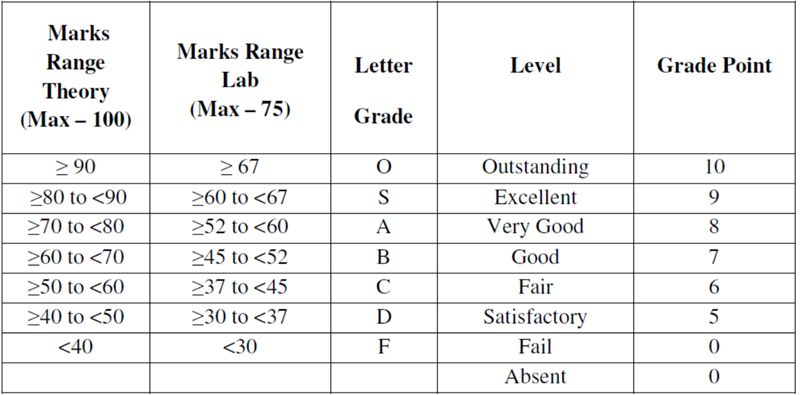 In alcoholic hepatitis, the AST:ALT ratio is greater than 2.0 and the AST increase is seldom more than 300 U/L. In contrast, viral hepatitis primarily damages the cell membrane, releasing more ALT than AST. The AST:ALT ratio is less than 1. The AST: ALT ratio is less useful in distinguishing alcoholic from other causes of hepatocellular injury in patients with cirrhosis, because the ratio is usually >1.
In alcoholic hepatitis, the AST:ALT ratio is greater than 2.0 and the AST increase is seldom more than 300 U/L. In contrast, viral hepatitis primarily damages the cell membrane, releasing more ALT than AST. The AST:ALT ratio is less than 1. The AST: ALT ratio is less useful in distinguishing alcoholic from other causes of hepatocellular injury in patients with cirrhosis, because the ratio is usually >1.
| Disease | Peak ALT x ULN | AST:ALT Ratio | Peak Bilirubin | Protime Prolongation |
| Viral hepatitis | 10 – 40 | <1 | <15 | <3 |
| Alcoholic hepatitis | 2 – 8 | >2 | <15 | 1 – 3 |
| Toxic injury | >40 | >1 early | <5 | >5 transient |
| Ischemic injury | >40 | >1 early | <5 | >5 transient |
The chronology and extent of AST elevation provides some insight into the etiology of the underlying liver disease.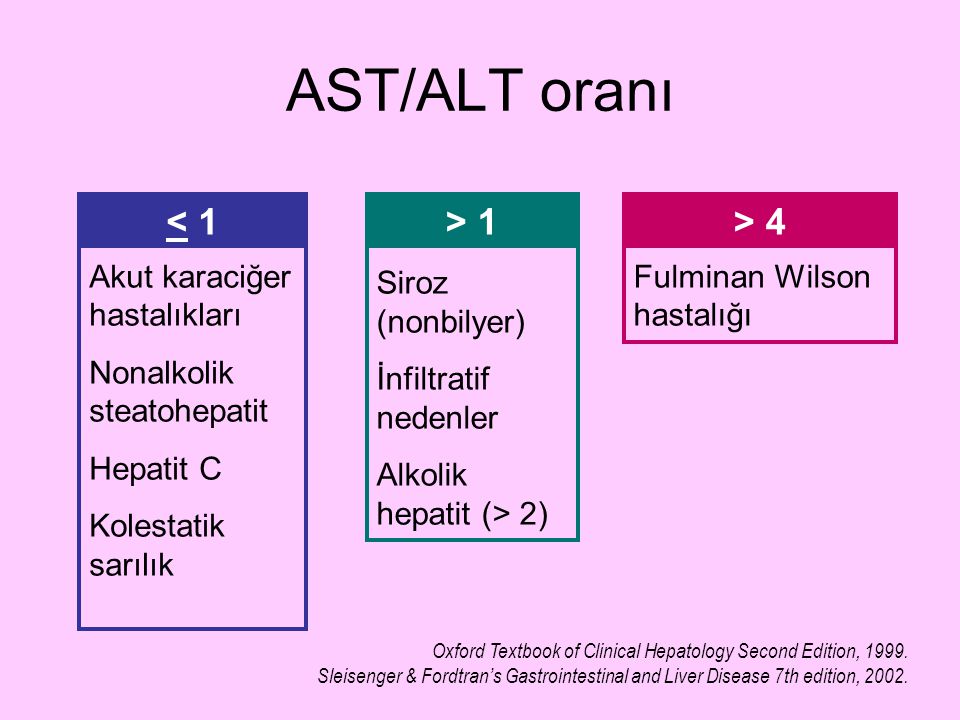 The highest serum levels occur in viral and toxic hepatitis and ischemic necrosis.
The highest serum levels occur in viral and toxic hepatitis and ischemic necrosis.
| Liver Disease | AST Pattern |
| Choledocholithiasis | Early increase to peak of <5 times ULN and return to normal within 72 hours |
| Cholangitis | Increase up to 10 times ULN |
| Viral hepatitis | Steady increase to peak level in low thousands at 7 – 14 days |
| Alcoholic hepatitis | Increase to <300 |
| Ischemic injury | Abrupt increase within 24 hours to peak >10,000 |
| Acetaminophen toxicity | Increase over 48 hours to peak >10,000 |
Turnaround time
1 day
Availability
Local test
Can be added on to an existing request up to 4 days following sample receipt
Specimen Labelling Procedure
Hepatitis Bloodwork and Lab Results for Babies Children Teens and Adults
When your child’s labs first come back, take this info into her pediatrician and ask which set of figures reflects the norm for her. Thereafter, you will be able to tell where your child’s results fall without having someone explain it to you. Saves you a lot of time and worry!
Thereafter, you will be able to tell where your child’s results fall without having someone explain it to you. Saves you a lot of time and worry!
Diagnostic and Therapeutic Information
Blood Chemistries/Body Fluids
(The following was found in Diagnostic and Therapeutic Information.)
Values compiled from published literature and from the Johns Hopkins Hospital Dept. of Laboratory Medicine. Values vary with the analytic method used, if doubt exists, consult your lab for its analytic method and range of normal values.
The first set of figures for each age group is Conventional units, and the second is SI units. The “Systeme Internationale” (SI) is used in Europe, and “Conventional units” is used in the U.S. Please keep in mind that labs do Quality Assurance and Controls all the time so ranges differ by some from day to day.
Acid Phosphatase
Newborn – 7. 4-19.4 U/L, 7.4-19.4 U/L
4-19.4 U/L, 7.4-19.4 U/L
2-13 yr – 6.4-15.2 U/L, 6.4-15.2 U/L
Adult male – 0.5-11.0 U/L, 0.5-11.0 U/L
Adult female – 0.2-9.5 U/L, 0.2-9.5 U/L
Alanine Aminotransferase (ALT)
Infant—<54 U/L, <54 U/L
Child/Adult – 1-30 U/L, 1-30 U/L
Aldolase
Newborn—<32 U/L, <32 U/L
Child—<16 U/L, <8 U/L
Adult—<8 U/L, <8 U/L
Alkaline Phosphatase
Infant—150-420 U/L, 150-420 U/L
2-10 yr – 100-320 U/L, 100-320 U/L
11-18 yr male – 100-390 U/L, 100-390 U/L
11-18 yr female – 100-320 U/L, 100-320 U/L
Adult – 30-120 U/L, 30-100 U/L
Alpha-1 Antitrypsin
93-224 mg/dl, 0.93-2.24 g/L
Alpha Fetoprotein
Fetal (1st trimester) – 200-400 mg/dl, Peak 2-4 g/L
Cord—<5mg/dl, <0.05 g/L
>1yr-adult—<30ng/ml, <30mcg/L
Tumor marker
0-10 mg/ml
Ammonia Nitrogen (Heparinized Venous Specimen on ice water analyzed within 30 minutes)
Newborn – 90-150 mcg/dl, 64-107 mcmol N/L
0-2 wk – 79-129 mcg/dl, 56-92 mcmol N/L
>1 mo – 29-70 mcg/dl, 21-50mcmol N/L
Adult – 0-50 mcg/dl, 0-35. 7 mcmol N/L
7 mcmol N/L
Amylase
Newborn – 0-44 U/L, 5-65 U/L
Adult – 0-88 U/L, 0-130 U/L
Anti-Hyaluronidase Antibody
<1:256
Antinuclear Antibody
<1:160
Anti-Streptolysin O Titer (4x rise at weekly interval is significant)
Preschool—<1:85
School age—<1:170
Older adult—<1:85
Note: Alternatively, values up to 200 Todd units is normal
Arsenic
Normal—<3mcg/dl, <0.39 mcmol/L
Acute poisoning – 60-930 mcg/dl, 7.98-124 mcmol/L
Chronic poisoning – 10-50 mcg/dl, 1.33-6.65 mcmol/L
Aspartate Aminotransferase (AST)
Newborn/infant – 20-65 U/L, 20-65 U/L
Child/adult – 0-35 U/L, 0-4350 U/L
Bicarbonate
Premature – 18-26 mEq/L, 18-26 mmol/L
Full term – 20-25 mEq/L, 20-25 mmol/L
>2 yr – 22-26 mEq/L, 22-26 mmol/L
Bilirubin (Total)
Cord – Preterm—<1. 8 mg/dl, <30 mcmol/L
8 mg/dl, <30 mcmol/L
Cord – Term—<1.8 mg/dl, <30 mcmol/L
0-1 day – Preterm—<8 mg/dl, 137 mcmol/L
0-1 day – Term—<6 mg/dl, <103 mcmol/L
1-2 days – Preterm—<12 mg/dl, <205 mcmol/L
1-2 days – Term—<8 mg/dl, <137 mcmol/L
3-7 days – Preterm—<16 mg/dl, <274 mcmol/L
3-7 days – Term—<12 mg/dl, <205 mcmol/L
7-30 days – Preterm—<12 mg/dl, <205 mcmol/L
7-30 days – Term—<7mg/dl, <120 mcmol/L
Thereafter – Preterm—<2 mg/dl, <34 mcmol/L
Thereafter – Term – 1.2 mg/dl, <20.5 mcmol/L
Adult – 0.1-1.2 mg/dl, 1.7-20.5 mcmol/L
Bilirubin (Conjugated)
0-0.4 mg/dl, 0-8 mcmol/L
Calcium (Total)
Premature <1 wk – 6-10 mg/dl, 1.5-2.5 mmol/L
Full Term <1wk – 7.0-12.0 mg/dl, 1.75-3.0 mmol/L
Child – 8.0-10.5 mg/dl, 2-2.6 mmol/L
Adult – 8.5-10.5 mg/dl, 2.1-2.6 mmol/L
Calcium (Ionized)
Newborn <48 hr – 4.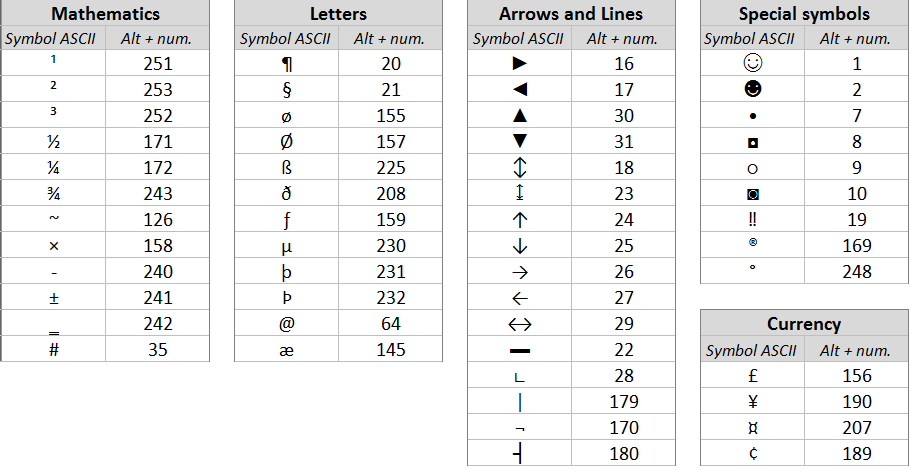 0-4.7 mg/dl, 1.00-1.18 mmol/L
0-4.7 mg/dl, 1.00-1.18 mmol/L
Adult – 4.52-5.28 mg/dl, 1.13-1.32 mmol/L
Carbon Dioxide (CO2 Content)
Cord blood – 14-22 mEq/L, 14-22 mmol/L
Infant/child – 20-24 mEq/L, 20-24 mmol/L
Adult – 24-30 mEq/L, 24-30 mmol/L
Carbon Monoxide (Carboxyhemoglobin)
Nonsmoker – 0%-2% of total hemoglobin
Smoker – 2%-10% of total hemoglobin
Toxic – 20%-60% of total hemoglobin
Lethal—>60% of total hemoglobin
Carotenoids (Carotenes)
Infant – 20-70 mcg/dl, 0.37-1.30 mcmol/L
Child – 40-130 mcg/dl, 0.74-2.42 mcmol/L
Adult – 50-250 mcg/dl, 0.95-4.69 mcmol/L
Ceruloplasmin
21-53 mg/dl, 210-530 mg/L
Chloride
Pediatric – 99-111 mEq/L, 99-111 mmol/L
Adult – 96-109 mEq/L, 96-109 mEq/L
Cholesterol (See Lipids)
Copper
0-6 mo – 20-70 mcg/dl, 3.1-11 mcmol/L
6 yr – 90-190 mcg/dl, 14-30 mcmol/L
12 yr – 80-160 mcg/dl, 12. 6-25 mcmol/L
6-25 mcmol/L
Adult male – 70-140 mcg/dl, 11-22 mcmol/L
Adult female – 80-155 mcg/dl, 12.6-24.3 mcmol/L
C-Reactive Protein
Negative
Creatine Kinase (Creatine Phosphokinase)
Newborn – 10-200 U/L, 10-200 U/L
Adult male – 12-80 U/L, 12-80 U/L
Adult female – 10-55 U/L, 10-55 U/L
Creatinine (Serum)
Cord – 0.6-1.2 mg/dl, 53-106 mcmol/L
Newborn – 0.3-1.0 mg/dl, 27-88 mcmol/L
Infant – 0.2-0.4 mg/dl, 18-35 mcmol/L
Child – 0.3-0.7 mg/dl, 27-62 mcmol/L
Adolescent – 0.5-1.0 mg/dl, 44-88 mcmol/L
Adult male – 0.6-1.3 mg/dl, 53-115 mcmol/L
Adult female – 0.5-1.2 mg/dl, 44-106 mcmol/L
Ferritin
Newborn – 25-200 ng/ml, 25-200 mcg/L
1 mo – 200-600 ng/ml, 200-600 mcg/L
6 mo – 50-200 ng/ml, 50-200 mcg/L
6 mo-15 yr – 7-140 ng/ml, 7-140 mcg/L
Adult male – 15-200 ng/ml, 15-200 mcg/L
Adult female – 12-150 ng/ml, 12-150 mcg/L
Fibrinogen
200-400 mg/dl, 2-4 g/L
Folic Acid (Folate)
>3 ng/ml, 4. 0-20.0 nmol/L
0-20.0 nmol/L
Folic Acid (RBCS)
153-605 mcg/ml RBC
Galactose
Newborn – 0-20 mg/dl, 0-1.11 mmol/L
Thereafter—<5 mg/dl, <0.28 mmol/L
Gamma-Glutamyl Transferase (GGT)
Cord – 19-270 U/L, 19-270 U/L
Premature – 56-223 U/L, 56-233 U/L
0-3wk – 0-130 U/L, 0-130 U/L
3 wk – 3 mo – 4-120 U/L, 4-120 U/L
>3 mo male – 5-65 U/L, 5-65 U/L
>3 mo female – 5-35 U/L, 5-35 U/L
1-15 yr – 0-23 U/L, 0-23 U/L
Adult male – 11-50 U/L, 11-50 U/L
Adult female – 7-32 U/L, 7-32 U/L
Gastrin
<100pg/ml, 100 ng/L
Glucose (Serum)
Premature – 45-100 mg/dl, 1.1-3.6 mmol/L
Full term – 45-120 mg/dl, 1.1-6.4 mmol/L
1 wk-16 yr – 60-105 mg/dl, 3.3-5.8 mmol/L
>16 yr – 70-115 mg/dl, 3.9-6.4 mmol/L
Iron
Newborn – 100-250 mcg/dl, 18-45 mcmol/L
Infant – 40-100 mcg/dl, 7-18 mcmol/L
Child – 50-120 mcg/dl, 9-22 mcmol/L
Adult male – 65-170 mcg/dl, 12-30 mcmol/L
Adult female – 50-170 mcg/dl, 9-30 mcmol/L
Ketones
Qualitative – Negative
Quantitative – 0. 5-3.0 mg/dl, 5-30 mg/L
5-3.0 mg/dl, 5-30 mg/L
Lactate
Capillary blood
Newborn—<27 mg/dl, 0.0-3.0 mmol/L
Child – 5-20 mg/dl, 0.56-2.25 mmol/L
Venous – 5-20 mg/dl, 0.5-2.2 mmol/L
Arterial – 5-14 mg/dl, 0.5-1.6 mmol/L
Lactate Dehydrogenase (at 37 degrees C)
Neonate – 160-1500 U/L, 160-1500 U/L
Infant – 150-360 U/L, 150-360 U/L
Child – 150-300 U/L, 150-300 U/L
Adult – 0-220 U/L, 0-220 U/L
Lactate Dehydrogenase Isoenzymes (% Total)
LD1 heart – 24%-34%
LD2 heart, erythrocytes – 35%-45%
LD3 muscle – 15%-25%
LD4 liver, trace muscle – 4%-10%
LD5 liver, muscle – 1%-9%
Lead
Child—<10 mcg/dl, <48 mcmol/L
Lipase
4-24 U/dl
Lipids
Cholesterol (mg/dl)
Child/adolescent—<170 desirable, 170-199 borderline, ³ 200 high
Adults—<200 desirable, 200-239 borderline, ³ 240 high
Desirable HDL—<35 mg/dl
LDL (mg/dl)
Child/adolescent—<110 desirable, 110-129 borderline, ³ 130 high
Adults—<130 desirable, 130-159 borderline, ³ 160 high
Magnesium
1. 3-2.0 mEq/L, 0.65-1.0 mmol/L
3-2.0 mEq/L, 0.65-1.0 mmol/L
Manganese (Blood)
Newborn – 2.4-9.6 mcg/dl, 2.44-1.75 mcmol/L
2-18 yr – 0.8-2.1 mcg/dl, 0.15-0.38 mcmol/L
Methemoglobin
0-1.3% of total hg
Osmolality
285-295 mOsm/kg, 285-295 mmol/kg
Phenylalanine
Premature – 2.0-7.5 mg/dl, 0.12-0.45 mmol/L
Newborn – 1.2-3.4 mg/dl, 0.07-0.21 mmol/L
Adult – 0.8-1.8 mg/dl, 0.05-0.11 mmol/L
Phosphorous
Newborn – 4.2-9.0 mg/dl, 1.36-2.91 mmol/L
0-15 yr – 3.2-6.3 mg/dl, 1.03-2.1 mmol/L
Adult – 2.7-4.5 mg/dl, 0.87-1.45 mmol/L
Potassium
<10 days of age – 4.0-6.0 mEq/L, 4.0-6.0 mmol/L
>10 days of age – 3.5-5.0 mEq/L, 3.5-5.0 mmol/L
Prealbumin
Newborn-6 wk – 4-36 mg/dl
6 wk-16 yr – 13-27 mg/dl
Adult – 18-45 mg/dl
Proteins (check with your doctor)
Pyruvate
0. 3-0.9 mg/dl, 0.03-0.10 mmol/L
3-0.9 mg/dl, 0.03-0.10 mmol/L
Rheumatoid factor
<20
Rheumaton Titer (Modified Waaler-Rose slide test)
<10
Sodium
Premature – 130-140 mEq/L, 130-140 mmol/L
Older – 135-148 mEq/L, 135-148 mmol/L
Transaminase (SGOT)
See AST (aspartate aminotransferase)
Transaminase (SGPT)
See ALT (alanine aminotransferase)
Transferrin
Newborn – 130-275 mg/dl, 1.3-2.75 g/L
Adult – 200-400 mg/dl, 2.0-4.0 g/L
Urea Nitrogen
7-22 mg/dl, 2.5-7.9 mmol/L
Uric Acid
0-2 yr – 2.4-6.4 mg/dl, 0.14-0.38 mmol/L
2-12 yr – 2.4-5.9 mg/dl, 0.14-0.35 mmol/L
12-14 yr – 2.4-6.4 mg/dl, 0.14-0.38 mmol/L
Adult male – 3.5-7.2 mg/dl, 0.20-0.43 mmol/L
Adult female – 2.4-6.4 mg/dl, 0.14-0.38 mmol/L
Vitamin A (Retinol)
Newborn – 35-75 mcg/dl, 1.22-2.62 mcmol/L
Child – 30-80 mcg/dl, 1.05-2.79 mcmol/L
Adult – 30-65 mcg/dl, 1.05-2.27 mcmol/L
Vitamin B1
(Thiamine) – 5.3-7.9 mcg/dl, 0.16-0.23 mcmol/L
Vitamin B2
(Riboflavin) – 3.7-13.7 mcg/dl, 98-363 mcmol/L
Vitamin B12
(Cobalamin) – 130-785 pg/ml, 96-579 pmol/L
Vitamin C
(Ascorbic Acid) – 0.2-2.0 mg/dl, 11.4-113.6 mcmol/L
Vitamin D3
(1,25 Dihydroxy) – 25-45 pg/ml, 60-108 pmol/L
Vitamin E
5-20 mg/dl, 11.6-46.4 mcmol/L
Zinc
70-150 mcg/dl, 10.7-22.9 mcmol/L
Important disclaimer: The information on pkids.org is for educational purposes only and should not be considered to be medical advice. It is not meant to replace the advice of the physician who cares for your child. All medical advice and information should be considered to be incomplete without a physical exam, which is not possible without a visit to your doctor.
Common Liver Tests | Johns Hopkins Medicine
A series of special blood tests can often determine whether or not the liver is inflamed, injured, or functioning properly. These tests can also distinguish between acute and chronic liver disorders and between hepatitis (infection or inflammation of the liver) and cholestasis (disruption in the formation of or obstruction in the flow of bile).
Serum alkaline phosphatase test. This test is used to measure the level of alkaline phosphatase (an enzyme) in the blood. Alkaline phosphatase is found in many tissues, with the highest concentrations in the liver, biliary tract, and bone. This test may be performed to assess liver functioning and to find liver lesions that may cause biliary obstruction, such as tumors or abscesses.
Alanine transaminase (ALT) test. This test measures the level of alanine aminotransferase. This is an enzyme found mostly in the liver that is released into the bloodstream after acute liver cell damage. This test may be performed to assess liver function, and/or to evaluate treatment of acute liver disease, such as hepatitis.
Aspartate transaminase (AST) test. This test measures the level of aspartate transaminase. This is an enzyme that is found in the liver, kidneys, pancreas, heart, skeletal muscle, and red blood cells that is released into the bloodstream after liver or heart problems. This enzyme is released into the bloodstream after acute liver cell damage.
Gamma-glutamyl transpeptidase test. This test measures the level of gamma-glutamyl transpeptidase. This is an enzyme that is made in the liver, pancreas, and biliary tract. This test is often performed to assess liver function, to provide information about liver diseases, and to detect alcohol ingestion.
Lactic dehydrogenase test. This test can find tissue damage and may assist in the diagnosis of liver disease. Lactic dehydrogenase is a type of protein (also called an isoenzyme). It is involved in the body’s metabolic process. However, this is a very nonspecific liver test. It is rarely used for liver disease assessment.
Important Liver Values: Albumin, ALT, ALP & AST – Video & Lesson Transcript
The Albumin Clue
The liver is a big manufacturing plant that produces a lot of stuff. One important thing it makes is a protein called albumin. Albumin is responsible for transporting certain medicines you might have to take, waste products, and hormones. As if that wasn’t important enough, if there was no albumin, you’d also look very swollen because albumin’s presence in the blood keeps fluid from leaving your blood vessels and into your tissues.
Albumin is like a sponge; it sucks in water and keeps it in the blood vessels. And just like a sponge can carry all sorts of little microscopic particles within it, like minerals, bacteria, and the like, so too does albumin carry the things I mentioned before.
If abnormally low amounts of albumin are found in the blood, something termed hypoalbuminemia, then this can clue us into the fact that some sort of severe or long-standing liver damage has occurred, resulting in decreased albumin production.
Using AST and ALT as a Clue
Of course, a factory, our liver, that’s in trouble throws us more than one clue that something is wrong. Decreased manufacturing capabilities, resulting in low albumin, is just one clue that the factory isn’t working properly. But factories use machines, furnaces, and people to convert a raw material into a finished product. If something goes wrong with the machines, furnaces, or people, then smoke, fire, and loud screams may come from our factory to indicate a problem.
The machines, furnaces, and people in the liver are known as enzymes, proteins that speed up biochemical reactions. If the liver is sick, then it releases these enzymes into the bloodstream in larger-than-normal quantities. Their levels, these signals of liver injury, can then be measured with blood tests. If they are elevated, they may indicate primary liver disease, such as cirrhosis, hepatic congestion, or hepatitis.
Two of these enzymes that are measured for this purpose are AST, aspartate aminotransferase, and ALT, alanine aminotransferase, both of which have normal blood values of approximately 0-35 U/L. Also, AST was known as SGOT, and ALT used to be called SGPT. I decided to let you know that just in case you decided to read a medical text from the 1970s – then you’ll know what those things mean in modern terms or in certain countries that still use those abbreviations. But just remember AST and ALT for our lesson.
Using ALP as a Clue
Other than AST and ALT, there is an enzyme called ALP, technically called alkaline phosphatase, whose normal range in the blood is approximately 30-120 U/L. Sometimes it’s colloquially called ‘alk phos’ between medical personnel. It’s much easier to say it that way since it’s shorter than saying alkaline phosphatase and doesn’t get confused with other abbreviations phonetically like ALP may be when pronounced really quickly.
Elevations in alk phos are associated with biliary tree (aka biliary tract) obstruction. Knowing this, you should use our medical slang, alk phos, to your advantage. Think of the ‘o’ in alk ph’o’s as an indicator of ‘o’bstruction.
If you weren’t aware already, bile is a fluid that helps to digest fat. It is produced by the liver cells, known as hepatocytes. Once they produce bile, they secrete this bile into a system of channels and ducts, termed the biliary tree, which eventually empties out into the small intestine’s duodenum. Anything that obstructs this outflow or hepatocyte secretion of bile results in improper outflow of bile from the liver, something known as cholestasis. Therefore, alk phos is an indicator of this cholestasis.
Intrahepatic (within the liver) causes of cholestasis include biliary cirrhosis, alcoholic liver disease, cancer such as lymphoma, and viral hepatitis, among many others.
Extrahepatic (outside the liver proper) cholestasis can be induced by gallstones in the common bile duct; stricture (narrowing) of the bile duct; pancreatitis (inflammation of the pancreas), which squeezes the bile duct shut in some cases; tumors of the bile duct; and many more.
People with cholestasis may sometimes experience extreme pruritus (aka itching) as a result of bile salt deposition in their skin.
Of course, the biliary tree obstruction may conversely, with time, damage the liver cells as well. This will then result in elevations of ALT and AST, but less so than alk phos. On the other hand, alk phos will rise in primary liver disease, but the ALT and AST will be elevated much more so.
So, in cholestasis, our factory, the liver, may actually be working properly, but its products get backed up like crazy because the outflow of the product from the factory is impeded, creating a dangerous work environment!
Important Parting Notes
There’s one last thing I’d like to get into quickly before ending this lesson. All of the enzymes, including AST, ALT, and alk phos, can be found in places outside of the liver. Some of these enzymes can be increased as a result of heart disease, bone damage, muscle damage, and much more. Therefore, they’re not always specific to liver or biliary tree issues! That is why looking for increases in other enzymes, such as GGT, or increases in bilirubin, decreases in albumin, and clinical signs like jaundice, is important for piecing together the entire puzzle in order to narrow down the list of problems to the liver itself.
Finally, there is a common misnomer that AST, ALT, and alk phos are liver function tests. They’re not. They may be called this, but erroneously so. You should realize based on this lesson that they measure injury to the liver cells or bile ducts, not their function.
Lesson Summary
As a quick review, we measure the extent of liver or biliary injury through three main tests. They are:
- AST, aspartate aminotransferase
- ALT, alanine aminotransferase
- ALP, technically called alkaline phosphatase (alk phos)
ALP is going to be increased more so than the other two in cases of improper outflow of bile from the liver, something known as cholestasis. On the flipside, AST and ALT will be increased more than alk phos in primary hepatocellular disease.
Learning Outcomes
After you’ve completed this lesson, you’ll be able to:
- Recall the functions of albumin
- Identify the three main enzymes that indicate liver or biliary injury
- Describe what cholestasis and hepatocellular disease are and explain which test results suggest these conditions
- Summarize the intrahepatic and extrahepatic causes of cholestasis
- List some other signs that can confirm liver problems
Venous blood collection systems. How to choose blood collection tubes?
Every laboratory wants to minimize preanalytical errors as much as possible, improve the quality of blood test results, reduce the number of samples requiring re-collection, shorten processing times and improve patient care. Blood collection tubes are generally regarded as inert sample carriers, but studies have shown that tubes can contribute to errors in the preanalytical phase.
We still do not fully understand how these devices affect blood samples, but we can confidently say that the impact on test results is much greater than many healthcare professionals realize. Tube components, including tube wall material, rubber stoppers, lubricants, anticoagulants, separators (gels), clot activators, and surfactants, can affect sample quality and laboratory accuracy.These components and additives are capable of changing the composition of serum and plasma fractions.
Lab technicians can increase vigilance when reviewing laboratory test results and improve communication between the clinical laboratory and clinicians, but they cannot easily spot tube problems without analyzing the population (moving averages) of their analyzes. Tracking populations at regular intervals can alert the laboratory of potential tube problems.
To assess the impact of blood collection device components in clinical trials, technicians should:
- Test the same analyte using an alternative test procedure;
-
incubate the sample with the various components of the blood collection device to determine the source of potential interference; -
contact the manufacturers of biomaterial collection devices and analyzers; -
if necessary, submit a notice of a medical device to the Food and Drug Administration; -
if possible, switch to a new manufacturer of blood collection tubes.
Any new or substantially modified blood collection systems introduced into the laboratory should have a well-planned validation protocol and validated by qualified professionals. This protocol should detail the validation procedure, include predefined acceptance criteria and statistical methods, and follow the human testing policies and procedures established by the institution’s supervisory board (committee) or ethics committee.Blood samples from both patients and otherwise healthy individuals should be collected and included in the tube validation study. This test should also cover the entire blood collection system (needles, holders, tubes, etc.) and not a specific tube or component.
To determine the accuracy of test results obtained with new or substantially modified blood collection tubes, laboratories should conduct a tube comparison similar to that described in CLSI guideline EP9-A (1992).Samples covering the reporting ranges for each analyte must be evaluated using a specified number of samples. This will provide sufficient scope for statistical analysis of the data. To analyze the comparison data between tubes, use the linear regression method or a similar method and Bland-Altman type plots.
To assess the inaccuracy of test results collected in new or significantly modified tubes, laboratory technicians can compare the variability in test results from samples collected in new tubes with the variability of results obtained from samples in current tubes in use.Another means to accomplish this is to retest quality control (QC) material and / or patient samples as described in CLSI EP5-A (1992). For the analysis of substances that are physiologically undetectable, or those that exist in low concentrations in the body of healthy people, or to obtain samples that cover the recorded range, the analyte of interest should be added to the samples whenever possible. The total number of analyzes for tube validation studies will depend on the intended use of the blood collection device.Laboratories can select representative samples for evaluation from a variety of test methods such as ion-specific electrophoresis, immunoassays, and spectrophotometry. Tube problems are difficult to recognize in a timely manner because problematic blood collection devices may not be used in routine QC testing. Likewise, the proficiency test will not detect problems with sampling systems because proficiency specimens do not need to be collected from the devices regularly used for collecting blood.
Comparison of control sera results should reveal adverse effects of tube additives, but such tests are rare in most clinical laboratories. It is also impractical for most healthcare settings due to the variety of tubes used and the frequent change of tube lots.
Laboratories should implement a well-planned tube inspection protocol whenever they change tubes on the fly.
Looking to the future, new technologies hold the promise of greater analytical sensitivity and lower sample volumes. However, they may be more susceptible to analytical interferences even when there is little interference from the components of the blood collection systems, which can lead to altered analyzes and erroneous test results. Tube manufacturers, researchers and laboratory technicians will need to be alert to these issues and develop products such as chemically modified tube wall material to eliminate surfactant interference.
Because effective clinical decisions depend on accurate laboratory results, tube components must be manufactured to extremely high standards, just like other medical devices. Known and foreseeable risks and unwanted consequences should be eliminated and minimized. Tube manufacturers, in vitro diagnostic companies and laboratory technicians must remain vigilant to protect against the potential adverse effects of tubes and their components.
Expert opinion:
Recently, a huge number of tubes for taking biomaterials have appeared on the domestic market. But, unfortunately, the quality of these tubes does not always correspond to the declared technical characteristics. The use of such test tubes can lead to dubious research results and, as a consequence, distrust on the part of patients, a decrease in the volume of biomaterials and the status of the laboratory as a whole.
To obtain high-quality research results for blood sampling, it is optimal to use test tubes from well-known and proven manufacturers, who use high-quality materials, technologies in their production and strictly control the quality of components and products.
General information
Research Laboratory “Lighting devices and auxiliary lighting devices” (Research Laboratory “ST and VPS”) is one of the leading and intensively developing scientific laboratories of Kazan State Power Engineering University.
The staff of the ST and VPS Research Laboratory is made up of Doctor of Technical Sciences, associate professors, candidates of technical and physical and mathematical sciences and talented graduate students. Laboratory staff regularly prepare and publish scientific articles in journals from the list of the Higher Attestation Commission and indexed in Scopus and Web of Science systems, materials of reports for scientific conferences, applications for inventions, utility models and computer programs are submitted.
Completed R&D grants on the topics “Creation of a family of KAMAZ engines using alternative fuels with a power range of 300..400 h.p. and the potential for meeting promising environmental requirements ”and“ Research of topological features of sensor networks and development of an intelligent overhead power line (RFBR) ”.
Applied research and experimental development are carried out on the topic: “Development of a line of modules of various modifications for wireless networks as part of automation systems for various applications” (Unique identifier PNIER RFMEFI57715X0168).
The Center for Shared Use was created at the laboratory: “Lighting Technologies and Auxiliary Lighting Devices” (“STiVPS”) (Order of the Rector of KSPEU No. 93 of 25.03.2013), equipped with computers, low-voltage and high-voltage stabilized power supplies, multimeters, electronic oscilloscopes, soldering stations, and other machines and tools.
The main tasks of the STiVPS Research Laboratory are:
- carrying out research work under the programs of the Ministry of Education and Science of the Russian Federation and other scientific programs of the Russian Federation, regional and international scientific programs, carrying out contractual work on laboratory topics, introducing the obtained scientific results into the educational the process of attracting young teachers, graduate students and students to carry out R&D on the subject of the laboratory;
- practical testing and implementation of the results obtained at enterprises, organizations and institutions of various forms of ownership and fields of activity;
- assistance in improving the qualifications of scientific and scientific-pedagogical personnel;
- training of scientific and pedagogical personnel;
- Strengthening and development of the material and technical base of the laboratory;
- Establishing scientific contacts and scientific and technical cooperation with educational and scientific institutions in Russia, near and far abroad.
On the basis of the training center “Center of competences and technologies in the field of energy saving of the Republic of Tatarstan” KSPEU with the direct participation of laboratory staff, six demonstration laboratory stands were created:
1. “Demonstration and laboratory complex for comparative assessment of the effectiveness of street lamps”
2 “Demonstration and laboratory complex of intelligent artificial lighting systems and alternative energy”
3.”Demonstration and laboratory complex of solar lighting”
4. “Innovative energy-saving automated lighting installation for redistribution of light inside the room” – “Mirror wall”
5. “Demonstration and laboratory goniophotometer”
6. “Unmanned aerial vehicle”.
7. “Ice formation monitoring system”.
“Demonstration and laboratory complex for solar lighting”
The complex includes a solar lighting system and a lighting installation for redistributing light inside the room “Mirror Wall”.The solar lighting system has 10 heliostats located on the roofs of neighboring buildings. Each heliostat has 16 mirrors and two drives. Remote control. The movement is carried out automatically in accordance with the given program. The monitoring and control monitor is located inside the building.
“Demonstration and laboratory complex for comparative assessment of the effectiveness of street lamps”
The laboratory complex is designed to monitor the technical characteristics of street lighting fixtures in order to assess their energy efficiency.The luminaires under study are powered from the corresponding lighting panel of the standard power supply network. Signals from current, voltage and light sensors are fed to an electronic computer, where they are processed and stored. Information about the current values of the technical characteristics of the luminaires is sent to the monitor in the form of symbols and pictures, and is also available over the network.
“Demonstration and laboratory complex of intelligent artificial lighting systems and alternative energy”
LED lamps built into the ceiling are used as light sources in the lighting installation.The monitor for automatic control and management, digital surveillance cameras, as well as lamps are located inside the premises. Alternative energy sources – outside the premises. The installation is powered by a standard power supply network, solar panels located on the wall of the educational building “D” and wind generators located on the roof of the educational building “D”.
The laboratory complex is designed to create a comfortable light environment and monitor the lighting performance of an artificial lighting system powered by renewable energy sources in order to ensure a high level of energy efficiency.
Proposals:
1) Creation of a training and demonstration center: acquaintance of students and interested persons with modern equipment, methods of using and automation of lighting, robotics and other equipment, as part of a competence center. Training and advanced training on the equipment and software of the company.
2) Adaptation of technical solutions to Russian conditions and specific consumers.
3) Conducting regular meetings, open tables, conferences with the involvement of the company’s engineering staff in order to popularize equipment and technical solutions among students and graduate students, carry out theses on topics proposed by the company and using its equipment and software.
90,000 Pass the analysis for macroprolactin – prices in Moscow in the laboratory INVITRO
Method of determination
Comparison of prolactin concentration before and after PEG-precipitation of immune complexes.
Study material
Blood serum
Home visit available
Synonyms : High molecular weight prolactin.
MacroPRL, Big-big prolactin; Big-big PRL.
Brief description of the “Macroprolactin” test
Test for the presence of macroprolactin – comparison of prolactin levels before and after PEG-precipitation of immune complexes.
Normally, the main amount of prolactin in the blood is represented by monomeric prolactin. But an increased concentration of immunoreactive prolactin can sometimes be due to its biologically inactive complexes – “macroprolactin” (a compound of prolactin with immunoglobulins).These complexes (macroprolactin) can accumulate in the blood in significant concentrations, since they are removed from the circulation much more slowly, creating an erroneous idea of the level of prolactin secretion. In the presence of a high concentration of macroprolactin, clinical symptoms of hyperprolactinemia are noted much less frequently than with a high concentration of prolactin monomers (true hyperprolactinemia). The causes of macroprolactinemia are not well understood. Macroprolactinemia is a rare occurrence in the general population, but it is quite common among patients under medical supervision.Up to 26% of hyperprolactinemia detected during laboratory examination may be due to macroprolactinemia. At the same time, the proportion of macroprolactinemias among the detected hyperprolactinemias depends on the method used for the study of prolactin, since different technologies for the study of prolactin differ in sensitivity to macroprolactin. Therefore, the results of the study of prolactin obtained in different laboratories can vary significantly. To reduce the likelihood of diagnostic and therapeutic errors when a high concentration of prolactin is detected in a patient, a test for the presence of macroprolactin is recommended.Screening for macroprolactin is recommended when the result of prolactin is above 700 mU / L. Performing this test in hyperprolactinemia with a prolactin level of up to 700 mU / L is considered unreasonable, since it has been shown that in mild hyperprolactinemia, a significant presence of macroprolactin (more than 60% of the total amount) is practically not found. If the result of the initial study of prolactin is within the reference values, screening for macroprolactin is not practical.In INVITRO, the test for macroprolactin (the study of prolactin after the precipitation of macroprolactin complexes with polyethylene glycol, PEG) is carried out without additional payment if the result of prolactin is above 700 mU / L – in order to improve the quality and information content of the study of prolactin, to confirm the true nature of hyperprolactinemia. In the concentration range above the upper limit of reference values (women 557, men 407 mU / L), and up to 700 mU / L, a free additional test for macroprolactin is not performed.If it is desirable to conduct a test for macroprolactin regardless of the future result of prolactin, clients are given the opportunity to prescribe a paid test for macroprolactin, in addition to test No. 61 (Prolactin), immediately upon registration of the application. In this case, the macroprolactin test is subject to an additional charge, regardless of the prolactin result obtained in the future.
The result of the test for the presence of macroprolactin, as in other cases, will be issued in the form of a conclusion about the presence or absence of a significant amount of macroprolactin and the concentration of prolactin monomeric (post-PEG).
Literature
1. Goncharov NP, Dedov II, Kolesnikova GS et al. Clinical and diagnostic aspects of macroprolactinemia. Endocrinology problems. 2008, 1, pp. 24-28.
2. Igonina N.A., Kondrasheva E.A., Makarova T.A., Chashchina E.A. Screening for macroprolactin in patients with hyperprolactinemia: experience in routine laboratory practice. Clinical laboratory diagnostics. 2007, No. 5, pp. 35-36.
3. Toldy E, Locsei Z, Szabolcs I, Kneffel P, Goth M, Szoke D, Kovacs LG…. Macroprolactinemia in the differential diagnosis of hyperprolactinemia. Orv Hetil. 2003; 144: 2121-7 (Hungarian).
4. M. Fabie-Wilson. // In Hyperprolactinemia, Testing for Macroprolactin Is Essential. Clinical Chemistry. – 2003. – Vol. 49 (9). – P. 1434-1436.
5. Beltran L. et al Serum Total Prolactin and Monomeric Prolactin Reference Intervals Determined by Precipitation with Polyethylene Glycol: Evaluation and Validation on Common ImmunoAssay Platforms.Clinical Chemistry 2008, 54, 10 1673-1681
90,000 Navalny’s poisoning: loud but empty words of the West
Alexei Navalny was poisoned with a nerve agent from the same family to which the notorious Novichok gas belongs. swissinfo.ch
Swiss Radio SRF: The only thing the West is capable of is loud verbal condemnation.
This content was published on 08 September 2020 – 09:09
Fredy Gsteiger, diplomatic correspondentradio SRF / IP
Other languages 1
Reactions to the poisoning of Alexei Navalny are numerous, but the range of their effects is very narrow. In Berlin, the Foreign Ministry summoned the Russian ambassador to the “carpet”, Chancellor Angela Merkel says that only the Russian leadership can and should answer the questions that still remain open.
British Prime Minister Boris Johnson wants to achieve justice with his partners. NATO Secretary General Jens Stoltenberg is calling for Russia to be held accountable, and the head of the European Commission, Ursula von der Leyen, is calling for a “transparent investigation.”
Trump is silent
It is striking that nothing has been heard from him yet. The only one who responded from Washington is the UN Security Council. So far, nothing has been heard about President Donald Trump.
He views Moscow as an ally in his campaign against Joe Biden, just as he did during his campaign battles with Hillary Clinton. Beijing is also silent. Russia is considered a “strategic partner” there.
The call for a large-scale investigation into this poisoning is reasonable and urgent.For example, this investigation could be carried out with the participation of the OPCW in The Hague and the Swiss Laboratory for Radiological and Chemical-Bacteriological Analysis in Spiez, as well as experienced criminologists.
It is now known for sure: Alexei Navalny was poisoned with a nerve agent from the same family to which the notorious Novichok gas belongs. This is not convincing proof that this poisoning was ordered by the Kremlin and carried out by the Russian special services.Although this may be the only plausible explanation.
As far as we know, no other country has a Novichok developed in the USSR in the 1970s. In addition, such a neuroparalytic poison cannot be produced at home using the Young Chemist kit or purchased from Voentorg.
Moreover, the operation of the poisoning itself would require the involvement of huge material and technical resources. But the poisonous substances are so “good”: after them there is no “smoking colt” left.Their use is easy to deny, while the mere theoretical possibility of their use already has a deterrent effect on any opponents of the regime.
Moscow denies everything and offers its theories
Russia, it seems, is not even inclined to allow an investigation of the incident with international support. She resorts to the old tactics: smokescreens, denial, promotion of alternative theories.
Just as it happened with the poisoning of former spy Sergei Skripal in Great Britain or with the downed Malaysian Airlines plane over eastern Ukraine, Moscow is diligently sowing doubts.
It is obvious that Western countries do not even consider putting pressure on Moscow beyond the scope of verbal criticism. The EU is unlikely to agree with any really punitive measures against Russia.
In the United States, however, the parliament, and hence most of the Republicans, supports sanctions against Moscow for the annexation of Crimea. But hardly anyone there will be ready to go further. You definitely shouldn’t rely on President Trump here.
UNSC has hands tied
UN Security Council? His hands are tied.Because of the Russian – and possibly the Chinese – veto, he won’t be able to do anything. Individual countries or the EU as a whole could do something if they wanted to, but for now they are tying their own hands.
So no steps will follow or they will be very modest. This is to be expected. The poison attack on Navalny will not be the last. And why shouldn’t Putin continue to act in the same spirit, since he knows that all this will have absolutely no consequences for him?
The original German commentary is available at this linkExternal link.
Article in this material
Keywords:
.
